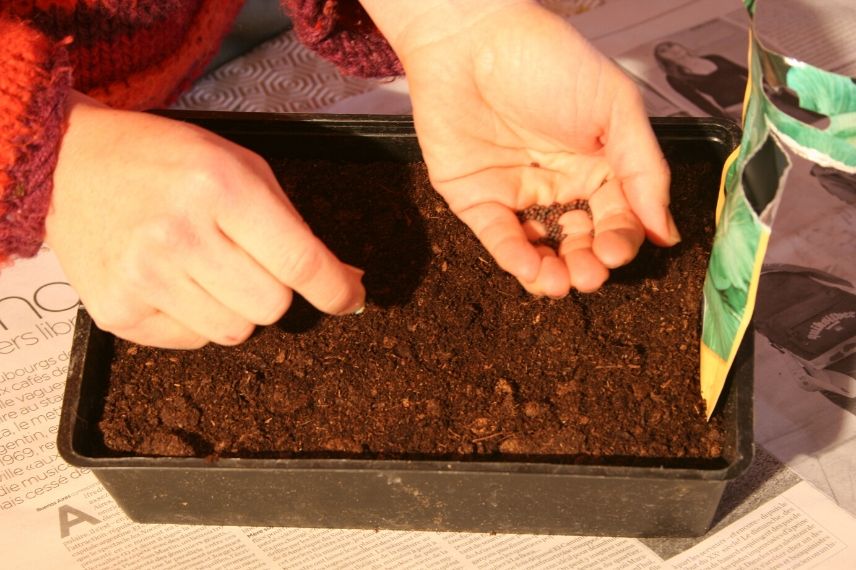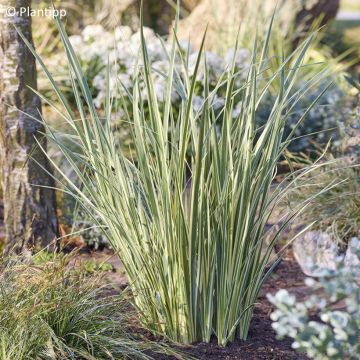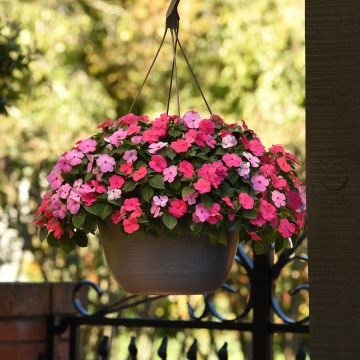
Vegetable garden calendar - January
sowing and planting
Contents
In January, the vegetable garden is generally at rest, unlike gardeners who are already preparing summer harvests. Indeed, from 15 January, first sowings can begin, mainly in warm conditions, indoors or under heated cover. These early sowings mainly concern sun-loving vegetables that can be planted fairly early, under cover (unheated greenhouse) or directly in the garden, from April onwards in the warmest regions such as southern France.
Find out what to do in the vegetable garden in January.
Vegetables to sow in a warm place, at home or under heated cover
We carry out, from mid-January, the sowing of the first vegetables intended for greenhouse cultivation. These are slow-growth vegetables that need warmth to germinate and develop :
- chillies
- peppers
- aubergines
Sowing is done in a seed tray, box or bucket, in a heated mini greenhouse (between 15 and 20°C) for example, or in a very bright location. It is followed by potting on as soon as plants are sufficiently developed to be handled safely.
Attention: place your sowings in a bright room to prevent them from becoming leggy. To find out more, discover our advice sheet: My sowings are leggy, why?

Read also
Vegetable garden calendar - OctoberVegetables to sow in a greenhouse or under unheated cover
Other vegetables need protecting without necessarily requiring heat. In January, you can sow:
-
radishes for forcing
Sow outdoors, under cold frame or under a growth tunnel to protect young shoots from frost and create a microclimate favourable to germination. We recommend sowing thinly, about one seed every 3 cm. Seeds germinate quickly. Sow only part of packet then sow another portion 2–3 weeks later to stagger harvests. Seed tapes are very handy and spare you thinning. For everything about radish growing, consult our full factsheet.
-
Certain lettuces
Cut-and-come-again lettuces, for example, can be sown from January. This includes varieties ‘Querido’ and ‘Red Salad Bowl organic’, which can be sown and harvested year-round. Sow under cover from October to February, then outdoors for rest of year. Sow thinly, in rows or in small clusters, under cold frame or tunnel. Germination is very rapid (4–10 days). After emergence, carry out thinning.
For more, read our advice sheets: Sowing salads and Cut-and-come-again lettuces: many advantages.
Sow in seed trays from January to August depending on variety; check instructions on your seed packets. Variety ‘Merveille de toutes les saisons’ is ideal for early sowing. Sow in seed trays, one seed every 1 cm, then once well grown place under tunnel or cold frame. Germination takes 5–10 days. Prick out young plants when they have at least two true leaves, individually into buckets or directly into vegetable garden when soil is sufficiently warm.
Consult our advice sheets to sow cabbages and to succeed in growing cauliflower.
It is possible to force carrots under unheated cover for a late-spring harvest. However, a minimum temperature of 7°C is needed for good germination, which generally takes 10–15 days. Sow thinly or in rows, taking care not to sow too thickly. One tip is to mix seeds with sand or dry coffee grounds or sow together with radish seed. Thin out so around one plant remains every 6 cm. Seed tapes are also useful.
For more advice, see: Carrot: sowing, growing and harvesting in vegetable garden.
-
Rocket (arugula)
Variety ‘Discovery’ is perfect for sowing from January. Sow in buckets or seed trays filled with compost, under unheated cover or outdoors under a tunnel. Seeds are sown on surface and covered with a fine layer of compost.
Note:
To avoid being surprised by a late frost, transplant after Ice Saints (11–13 May). Finally, discover our other advice on protecting sowings and crops from cold in vegetable garden or read our article on advantages and usefulness of a greenhouse for vegetable crops: A greenhouse in vegetable garden: what for?
Discover other Sowing and planting in January
View all →Available in 0 sizes
Available in 1 sizes
Available in 1 sizes
Available in 1 sizes

Available in 1 sizes
Available in 1 sizes
Available in 1 sizes
Available in 1 sizes
Available in 2 sizes
Available in 1 sizes
Vegetables to plant directly in ground in vegetable garden
For the first plantings of the year in the vegetable garden, garlic kicks things off! We particularly recommend Organic Rose Flavor garlic, renowned for its good keeping quality. It can be sown now and enjoyed from the end of summer. It is important to plant in well-drained soil to avoid any risk of rot that would harm its good keeping quality.
Discover everything you need to know about garlic: how to plant it, how to grow it, how to harvest it in the vegetable garden.

Sowing garlic bulbils in the vegetable garden can be done as early as January!
In January in the vegetable patch, it's also a good time to:
- Continue harvesting winter vegetables sown the previous year, such as cabbages, lamb’s lettuce, parsnips, leeks, salsify and Jerusalem artichokes,
- Collect wood ashes from your fireplace and spread them in the garden at the end of winter,
- Loosen vacant plots in your garden — a broadfork is very handy — and incorporate a fertiliser (home compost, manure…) to boost its productivity,
- Ventilate confined spaces (greenhouses, shelters…) as soon as weather permits,
- If this has not been done, make a plan, even a simple one, of what you grew last year to help plan crop rotation. Discover our article Plan your vegetable garden: rotation and associations in 5 steps.
Please note
This sowing calendar is provided for guidance. The recommended sowing and planting periods are based on average values and may vary. If you live in a climate warmer or colder than average, see our map and add the number of days corresponding to your zone to the theoretical sowing date.
Before sowing or planting your vegetables and aromatic plants, take weather into account and check forecasts for the coming days. No garden is immune to a late frost that could compromise emergence or survival of seedlings. Similarly, assess condition of your soil… if it is waterlogged or particularly cold, wait a while!
- Subscribe!
- Contents
![[plant_calendar month="january"] [plant_calendar month="january"]](https://en.promessedefleurs.eu/blogwp/wp-content/uploads/2020/06/calendrier-potager-janvier.jpg)








































Comments